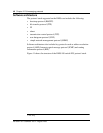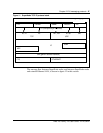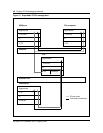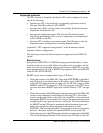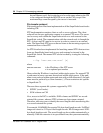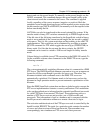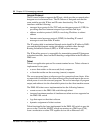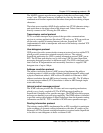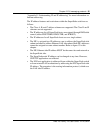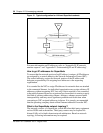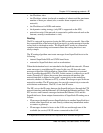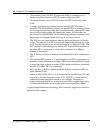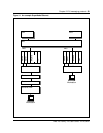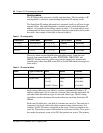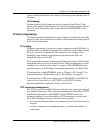
54 Chapter 2: EIU messaging protocols
297-8991-910 Standard 03.01 August 1999
Upon receiving RIP update from either another EIU or IP router on the LAN,
the RIP software updates internal IP routing table. According to RFC1058,
RIP response messages are transmitted every 30 s to Ethernet LAN.
Addressing
Within a single SuperNode switch, multiple hosts and multiple applications
within a single host may simultaneously request TCP/IP services. To provide
for application address uniqueness across the network, the following TCP/IP
address allocation scheme is used:
• TCP/UDP provides individual PORT numbers to distinguish between
applications in the same host.
• Each host processor in the Internet SuperNode switch is assigned a unique
IP address. This is a logical address, and when concatenated with TCP port
number, forms a unique network end-point or “socket”.
• A unique IP address is required per hardware device.
• Within the network, each node is physically identified by its own unique
physical hardware address. The logical IP address is translated to a
physical hardware address prior to datagram delivery to the destination
node.
• Within a SuperNode switch, each node such as DMS-core, FP, and EIU has
a unique FTA, which is the physical hardware address on the SuperNode
subnet. The EIU also has a media access control (MAC) address, which
uniquely identifies it on the Ethernet LAN.
• IP broadcast is not supported on the SuperNode subnet since the physical
layer does not support this.
MAC addresses
A unique media access control (MAC) address is assigned to each EIU through
table control datafill in table LIUINV. The norm within the industry is that the
MAC addresses are hard-coded in ROM. The EIU is different from industry
norm in this case. There is a flexibility of assigning the MAC address to the
EIU and at the same time the flexibility can result in problems if the addresses
are not assigned uniquely to the EIUs.
Only 48-bit MAC addresses are supported by the SuperNode switch.
For more information on MAC addresses, refer to “Appendix I: Obtaining a
MAC address”.
Internet addresses
The logical Internet address is analogous to physical or subnet addressing in
which each host is assigned unique integer address called the Internet address
or IP address. The Internet address integers are not assigned randomly, but are
assigned to nodes in such a way that Internet routing is more efficient. Refer to



